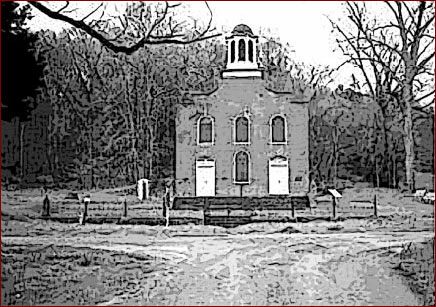

Near the Windsor Ruins is a narrow path for cars. It leads southwest into moss-laden trees and dares to go where only a horse should travel. On either side the forest and woods close in tighter as you move away from the main road. With twists and turns, it beckons you on. But the old ghost town which you seek is elusive, and the trees behave as if they want to close in behind you, blocking the path home.
It is an area belonging to the past, to river-boatmen, to plantations, to the Civil War, and to yellow fever. There are old graves out near the main road where tombstones weathered and eroded tell of a past reckless and vibrant. There were people of many kinds, aristocracy to slaves, proud ladies to concubines, all of whom made up the life and living which attached itself to the river. But the river has changed its course, having moved farther west. Now its artifacts dot the landscape, for those who are observant enough to see its departing motion and hear its sound in the overhanging trees. It speaks of a time, both good and evil, when people attended church and brought their slaves to sit in upper rear balconies, some of which still exist. A doe and her fawn with dancing movement quickly cross the path which once was heavy with the thud and rumble of wagon and mule, horse and carriage. A road which seems to lead nowhere, except to carry you backward in time, becomes more and more narrow and soon one feels obliged to escape before being entrapped by history.
Mississippi moving boldly through the twentieth century leaves in its wake some of Americana’s most colorful pieces, many of which lie along the great river and the Natchez Trace. It was an environment which tempered its occupant. By holding up a greater cross-section of life for him to study, it taught him well. Right and wrong were easily seen to exist side by side.
Present-day problems of our South might be solved more quickly and rationally by those whose forebears were nurtured by the many life experiences of those hills and hollows which line the Road to Rodney. Before it closes its pages, travel down it if you dare. But beware! Highwaymen may still be hiding in its dark places. Riderless horses with flying manes and jeweled bridles may be galloping along its upper ridges. Black men with tortured faces might be watching from hidden hollows. Gay bonnets and empty hoop skirts might still be there waltzing alone, long after the fiddlers are silent.
Whether you go there or not, to this place where shadows flicker and where echoes linger, know full well that it all most surely happened—along the Road to Rodney.
Photo courtesy of www.civilwaralbum.com
COPYRIGHT © 2001-2010 THE NEW SOUTHERN VIEW | 1/10/11 |